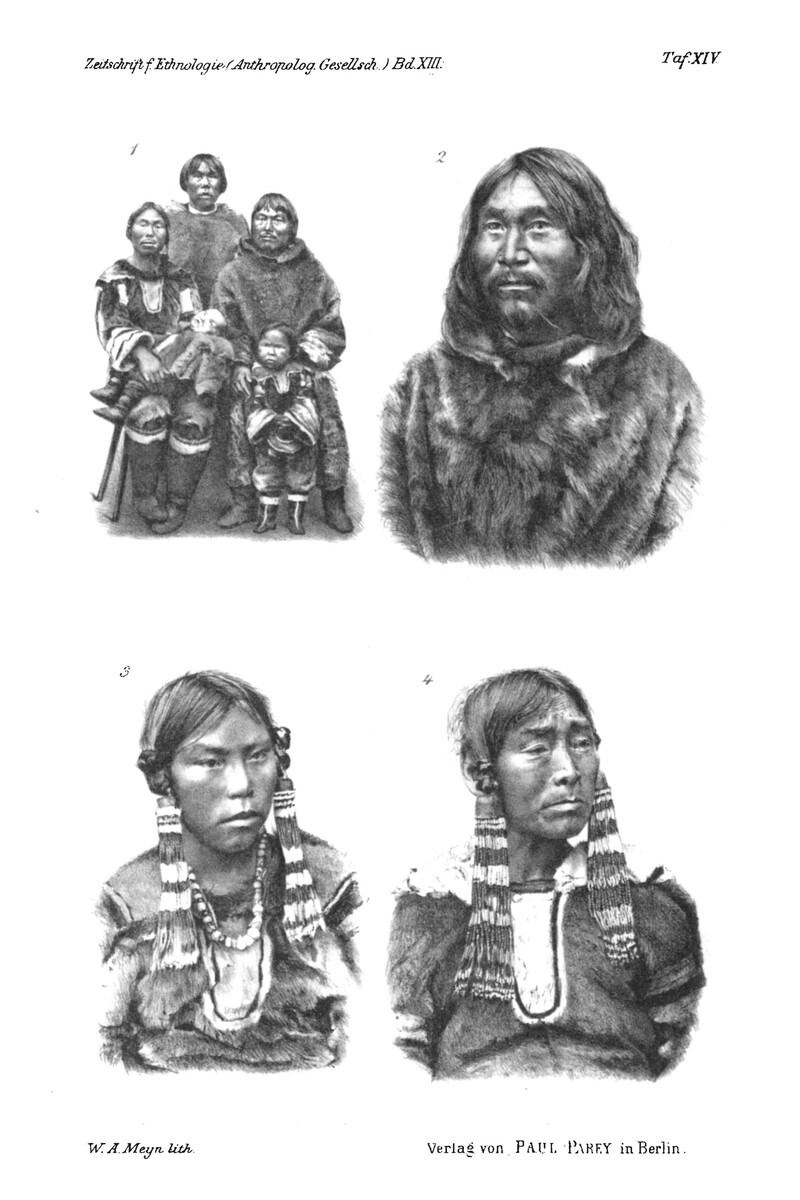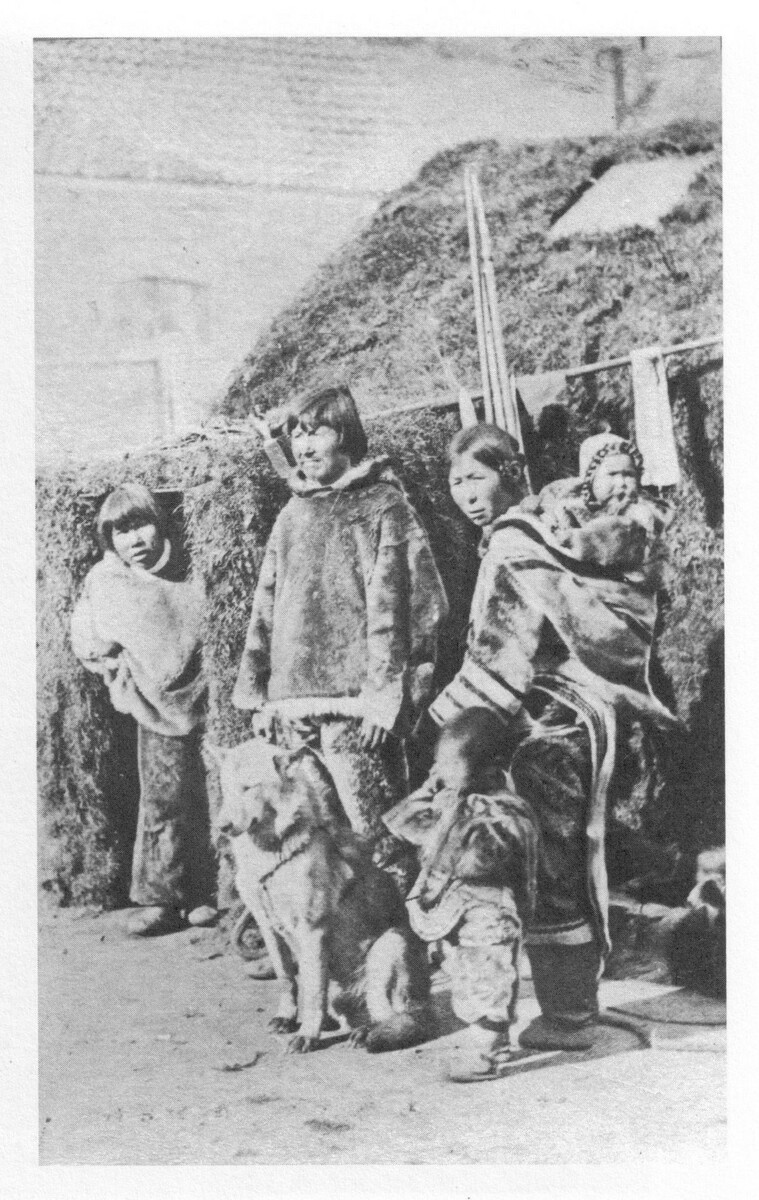Abstract
In the first of these images, we see the Christian Inuit family of
Abraham Ulrikab at top left (1), whom Johan Adrian Jacobsen had
recruited from the community of Hebron in Labrador (in what is now the
Canadian province of Newfoundland and Labrador) to become part of Carl
Hagenbeck’s Völkerschauen in Germany
in 1880–81. Standing is Tobias, nephew of Abraham and Ulrike,
approximately twenty years old; sitting from left to right are: Ulrike
(Abraham’s wife), their infant daughter Maria, Abraham, and their young
daughter Sara. At top right (2) we see the “heathen” shaman Terrianiak.
As bottom left (3) is his daughter Noggasak, and at bottom right (4) his
wife, Paingo. (The spelling of these names varies considerably in
Jacobsen’s and other accounts.) The second image, a photograph, shows
Abraham and his family standing in front of their hut at one of the
exhibition venues. All eight Inuit died of smallpox during the course of
the traveling exhibit. Jacobsen had neglected to have them vaccinated
upon their arrival in Europe. In 2014, research revealed that most of
their remains were kept in the Natural History Museum in Paris, where
five of the Inuit had died.

